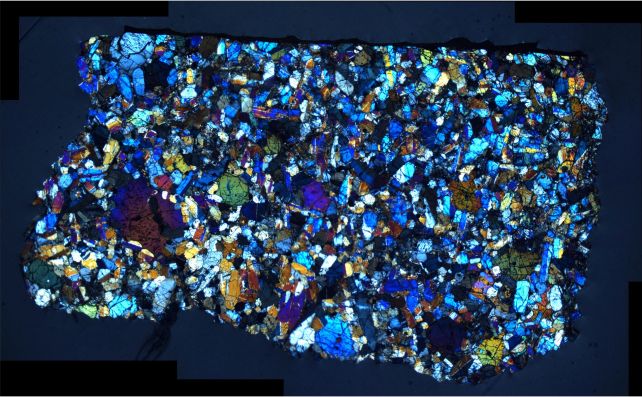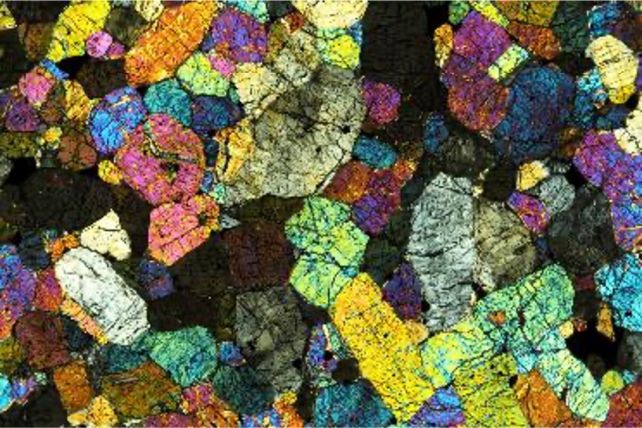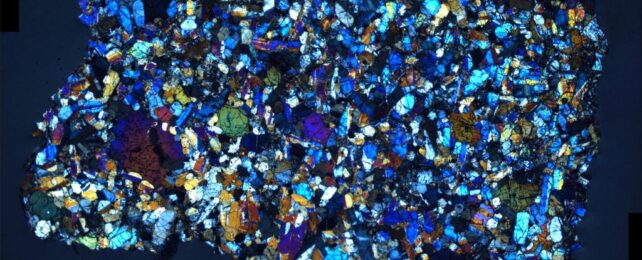An unexpected tool is giving us new insight into the fine structure of the outer layers of Mars.
Using meteorites that were long ago chipped off the red planet around 11 million years ago and flung into space to eventually land on Earth, scientists have been able to study the way volcanism shaped the crust and mantle of Mars to infer the presence of silicate reservoirs that fed their formation.
It's quite a crafty bit of research, really – we have new information about the structure and evolution of Mars, without having to go all the way there to get it. Martian meteorites are turning out to be quite an asset for understanding the planet's history, and they're delivered right here to our own doorstep.
"Martian meteorites are the only physical materials we have available from Mars," says geologist James Day of the Scripps Oceanography Institute.
"They enable us to make precise and accurate measurements and then quantify processes that occurred within Mars and close to the martian surface. They provide direct information on Mars' composition that can ground truth mission science, like the ongoing Perseverance rover operations taking place there."

The meteorites examined by Day and his colleagues come in two forms; chassignites, after a rock found in 1815 in Chassigny, France, and nakhlites after a specimen uncovered in Nakhla, Egypt, in 1905.
The two kinds of rock also have different compositions. Nakhlite is basaltic, containing inclusions of the minerals augite and olivine. Chassignite is almost entirely olivine.
Here on Earth, basalts are more abundant in the crust, and olivine more abundant in the mantle. Mars is no different.

By conducting a careful examination and comparison of the two kinds of rock, and their unique chemical characteristics, the researchers were able to determine that they were formed in the same volcano around 1.3 billion years ago. Their difference is due to a process called fractional crystallization, which is when differing conditions cause the liquid magma to harden into different configurations.
The nakhlites were part of the Martian crust; the chassignites were part of the mantle below. Moreover, some of the nakhlites were close enough to the crust to interact with, and become altered by, the atmosphere of Mars.
"By determining that nakhlites and chassignites are from the same volcanic system, and that they interacted with Martian crust that was altered by atmospheric interactions, we can identify a new rock type on Mars," Day says.
"With the existing collection of Martian meteorites, all of which are volcanic in origin, we are able to better understand the internal structure of Mars."
Interestingly, the two rocks show that volcanism on Mars is both similar to, and different from, volcanism on Earth. The fractional crystallization seems to take place the same way, forming basalt-dominant rock in the crust and olivine-dominant rock in the mantle, just like volcanic activity here at home.
"On the other hand, the reservoirs in Mars are extremely ancient, separating from one another shortly after the red planet formed," Day says. "On Earth, plate tectonics has helped to remix reservoirs back together over time. In this sense, Mars provides an important link between what the early Earth may have looked like from how it looks today."
The research has been published in Science Advances.
